Search
Search Results

Image
Mesopotamian Plaque Showing a Man Shooting at a Monkey
Clay plaque showing a man shooting at a monkey. The monkey is in the branches of a tree, in the centre. There is a boar at the foot of the right side of the tree. A kneeling man assists the shooter. This is possibly a scene from an Indian...
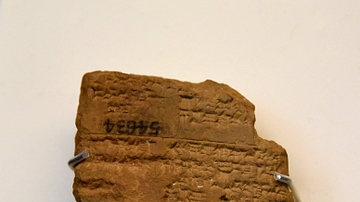
Image
Mesopotamian Tablet Describing the Walls of Babylon
This clay tablet fragment gives detailed measurements for the inner city wall called Imgur-Enlil at the start of Nebuchadnezzar II's reign. It names landmarks including Zababa and Urash gates. Modern surveys show that the figures are realistic...
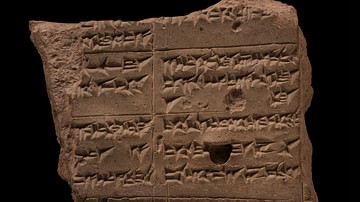
Image
Mesopotamian Tablet with Proverbs
Fragment of a Neo-Assyrian clay tablet, with 8 lines of bilingual text, including proverbs and riddles, from the Library of Ashurbanipal, Kouyunjik, Iraq.
The British Museum, London.
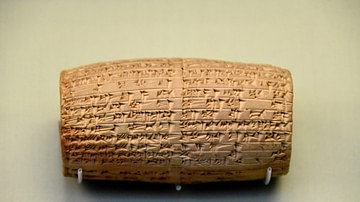
Image
Mesopotamian Cylinder Naming Nabonidus & Sacred Buildings
Clay cylinder with Babylonian characters, recording the restoration of Sin's ziggurat at Ur and also asking him to protect Nabonidus and his son Belshazzar. From Ur, Southern Mesopotamia, modern-day Iraq. Neo-Babylonian Period, reign of Nabonidus...

Image
Mesopotamian Tablet Naming Belshazzar
This adminsitrative document is dated to the "24th day of Kislimu in the 11th year Nabonidus, King of Babylon". It mentions "a slave of Bel-sharra-usur (Belshazzar),son of the king". Although Belshazzar is acting as regent, the formal date...
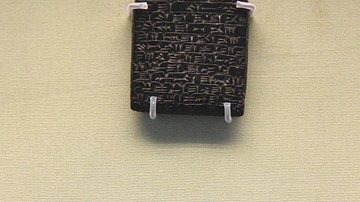
Image
Mesopotamian Amulet Against Plague
Mesopotamian amulet covered with a quotation from a poem, the Akkadian Erra Epic, thought suitable to ward off plague. From Ashur, Northern Mesopotamia, Iraq. Neo-Assyrian Period, 800-612 BCE.
The British Museum, London.
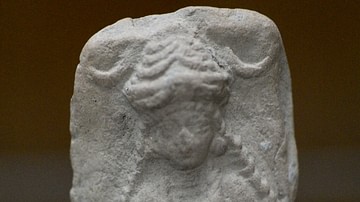
Image
Seated Mesopotamian Goddess
Mesopotamian female deity wearing a horned headdress and sitting on a chair or a throne, probably goddess Ishtar or goddess Bau. The lunar symbol of the moon god Sin appears at the upper part, flanking the headdress. Elaborate dress and braided...

Definition
Nanna
Nanna (also known as Nannar, Nanna-Suen, Sin, Asimbabbar, Namrasit, Inbu) is the Mesopotamian god of the moon and wisdom. He is one of the oldest gods in the Mesopotamian pantheon and is first mentioned at the very dawn of writing in Sumer...
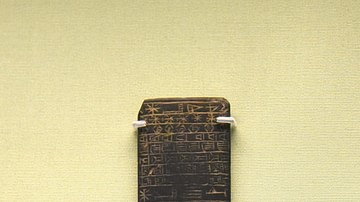
Image
Mesopotamian Amulet Against Ghosts
Stone inscribed with an incantation that has 7 signs, repeated 7 times. It is much worn through use. From Mesopotamia, modern-day Iraq, c. 800-550 BCE.
The British Museum, London.
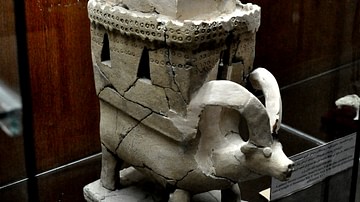
Image
Mesopotamian Incense Container
A pottery incense container found at layer 5 of the altar platform of the central temple of Basmosian Hill, Mesopotamia, Hurrian period, 2nd millennium BCE.
Sulaimaniya Museum, Iraq.